Chingona Catrinas Light Up The Night
Akemi Rico | Social Media Editor
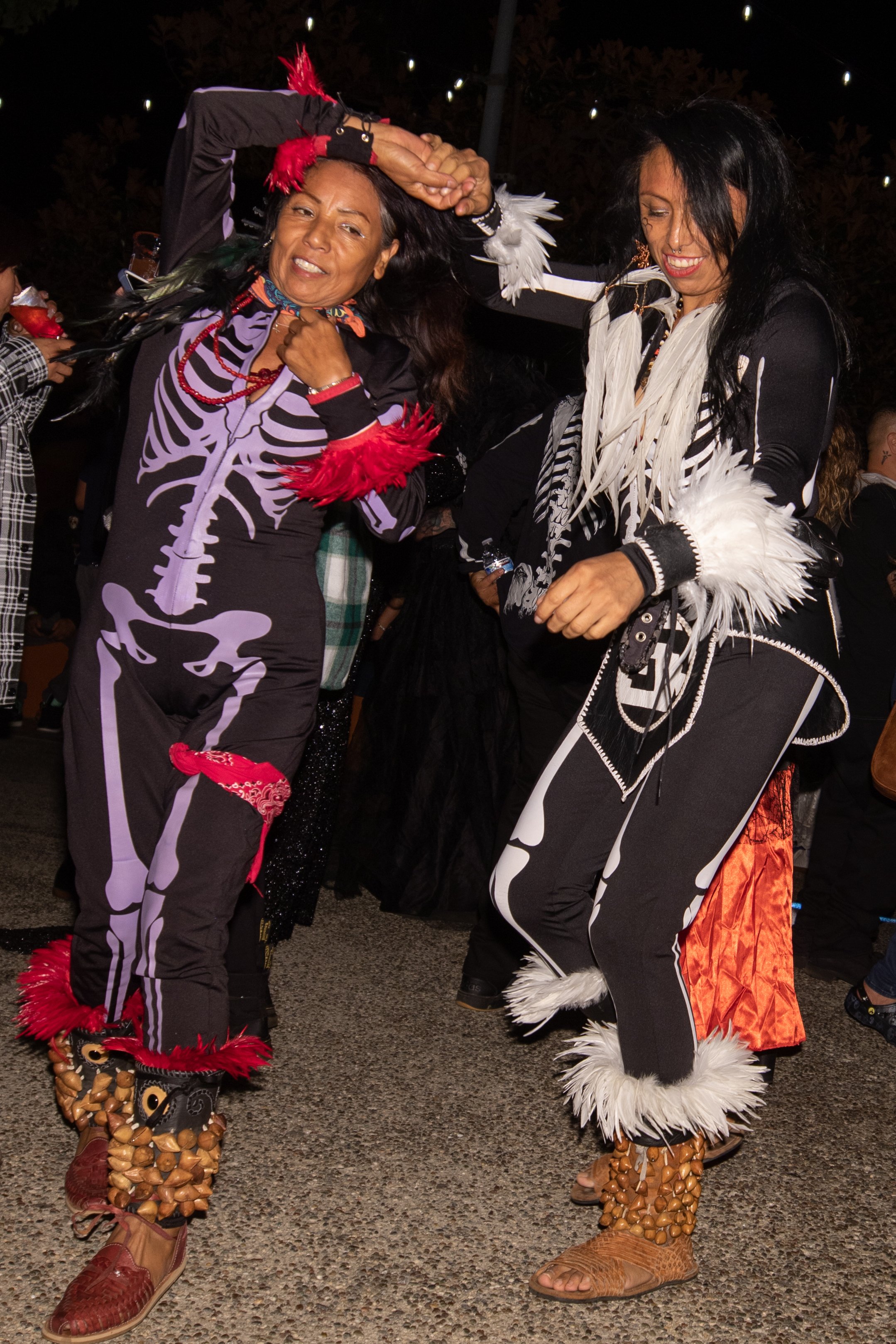
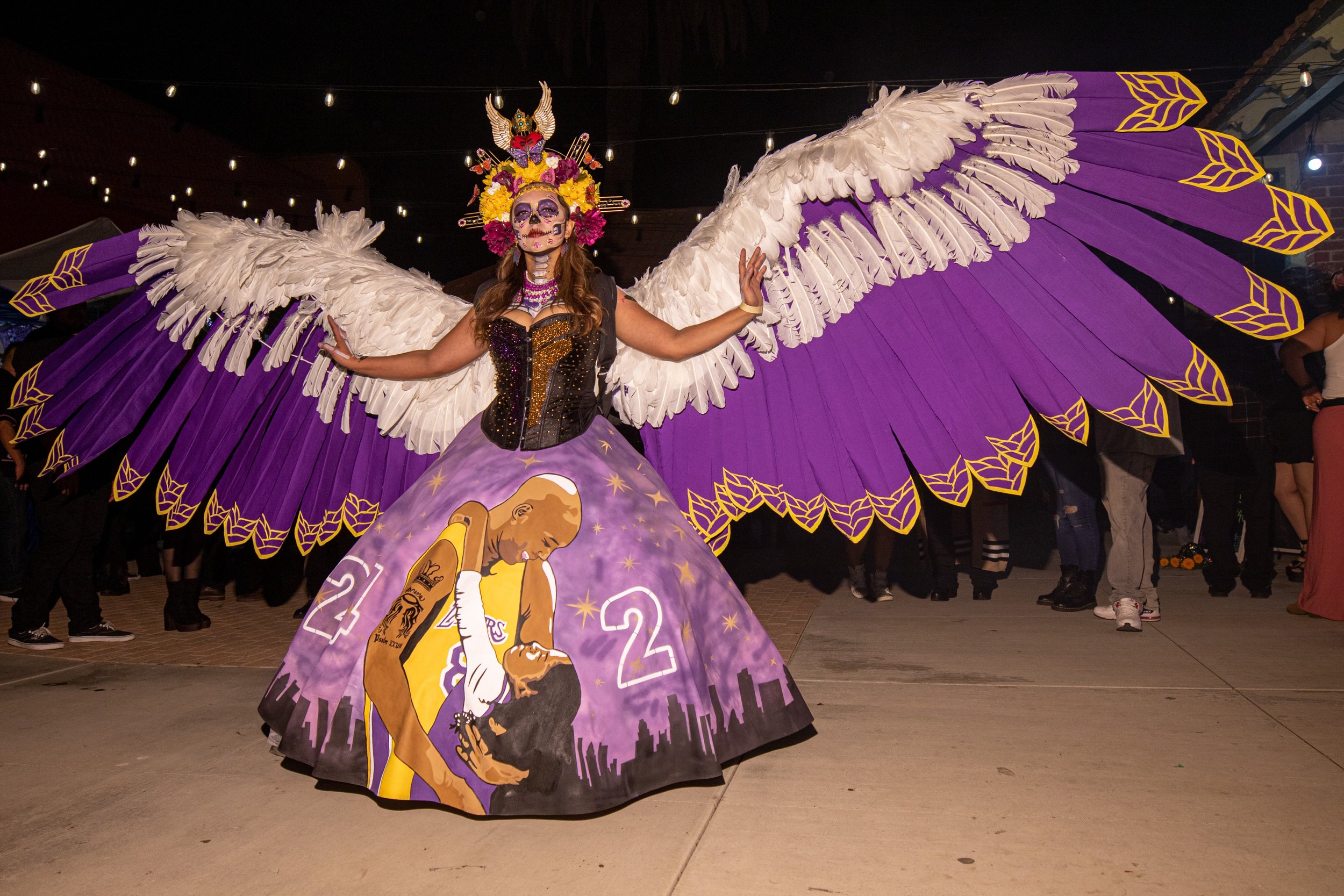

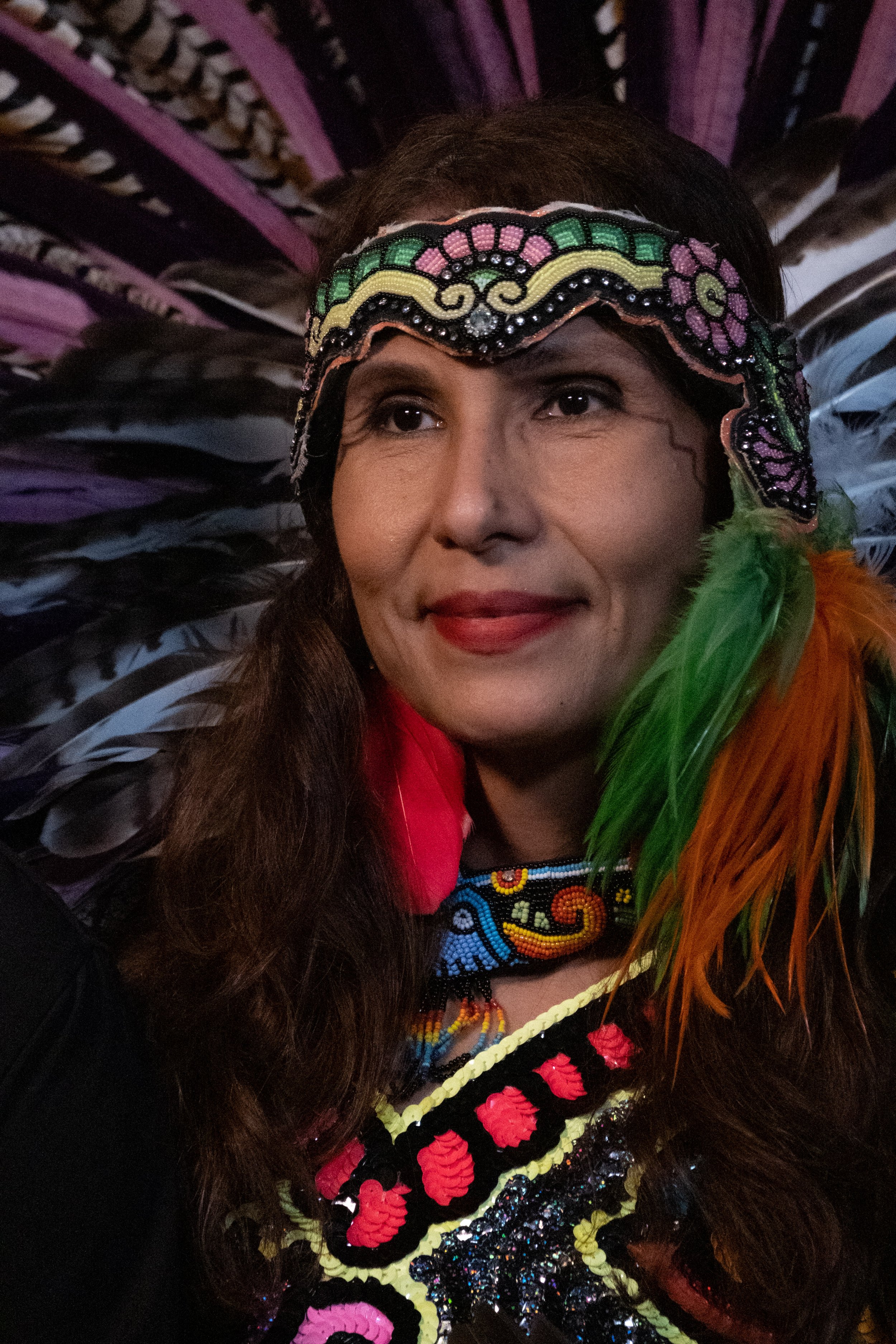
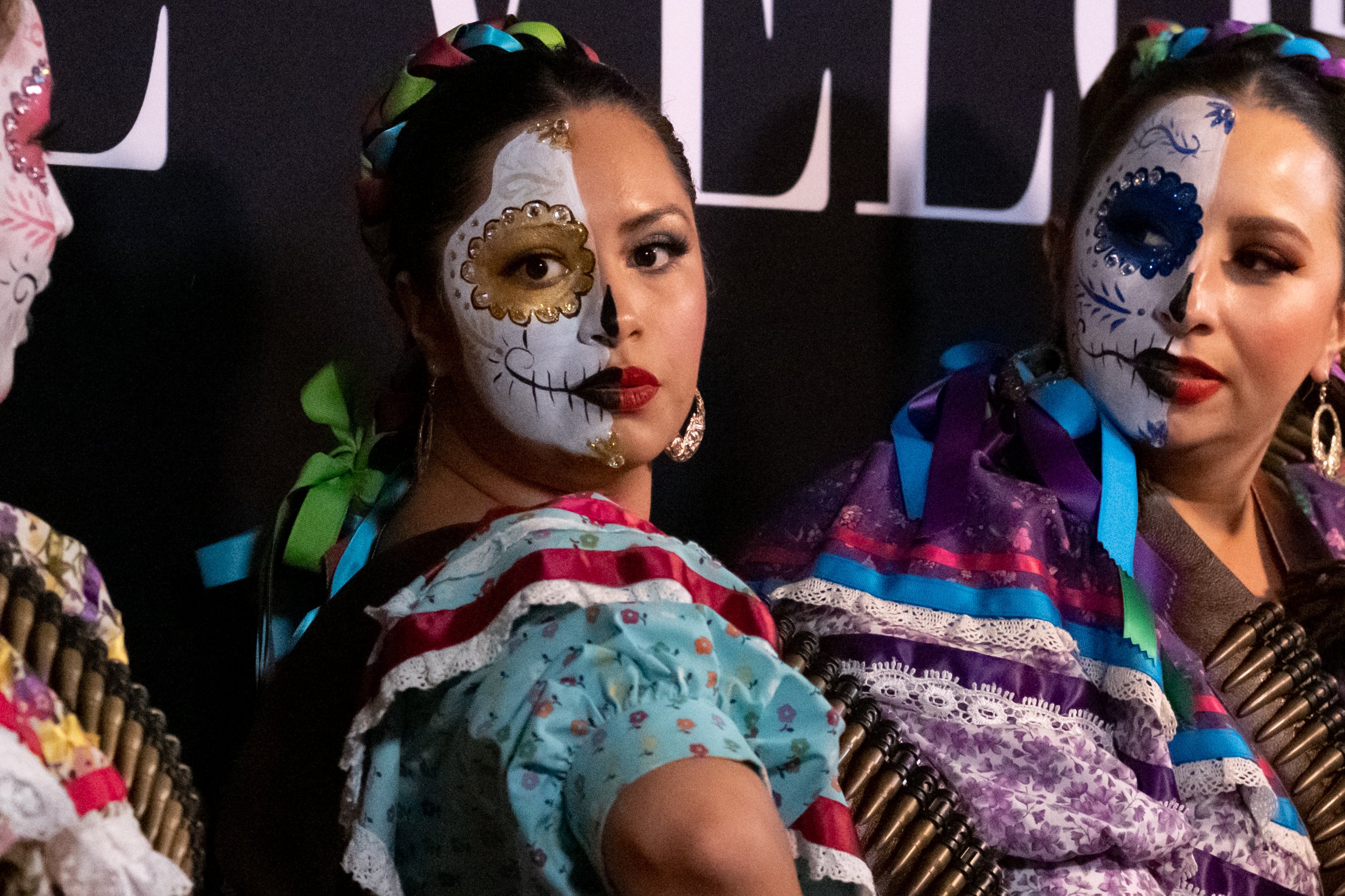
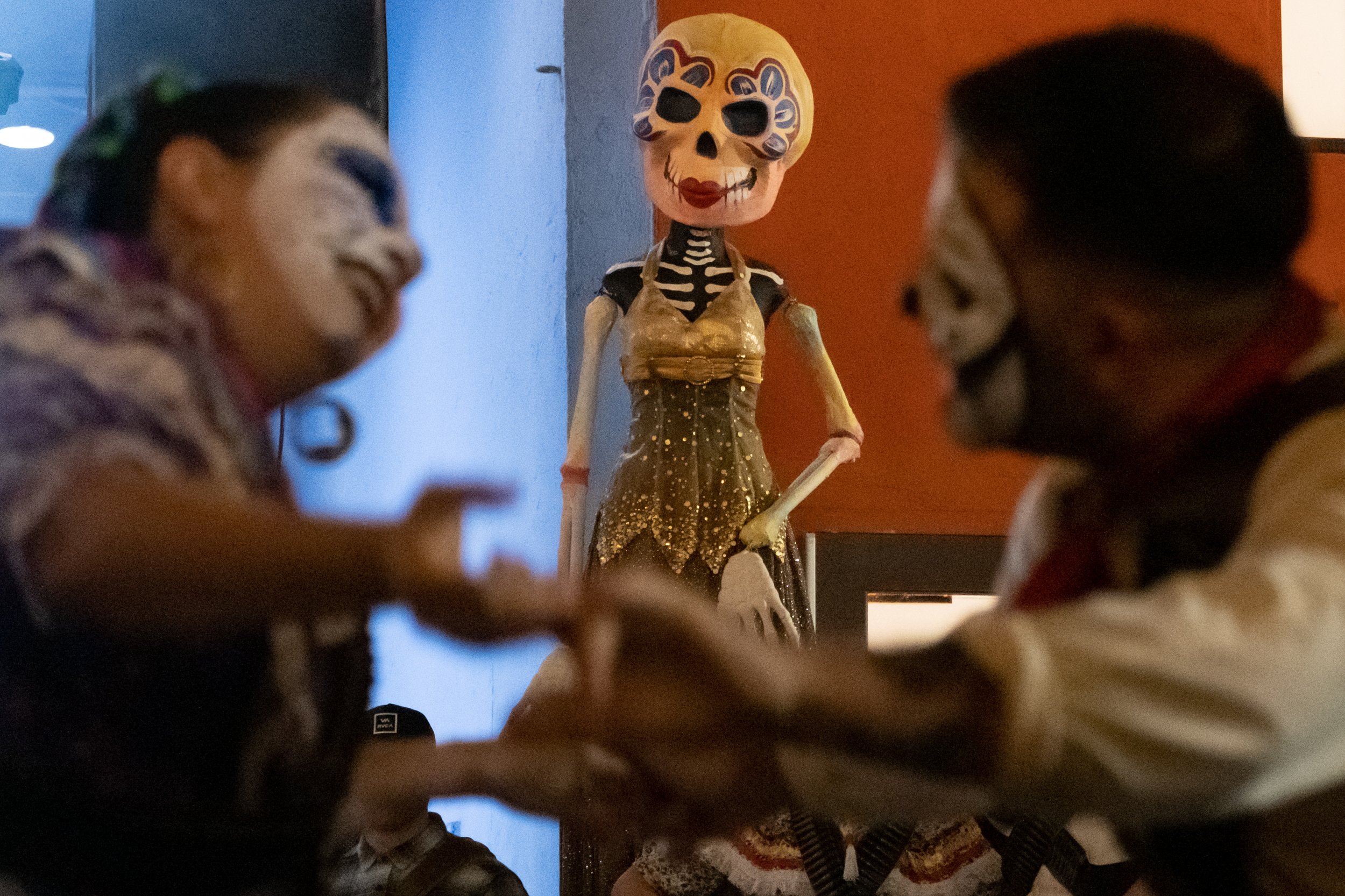
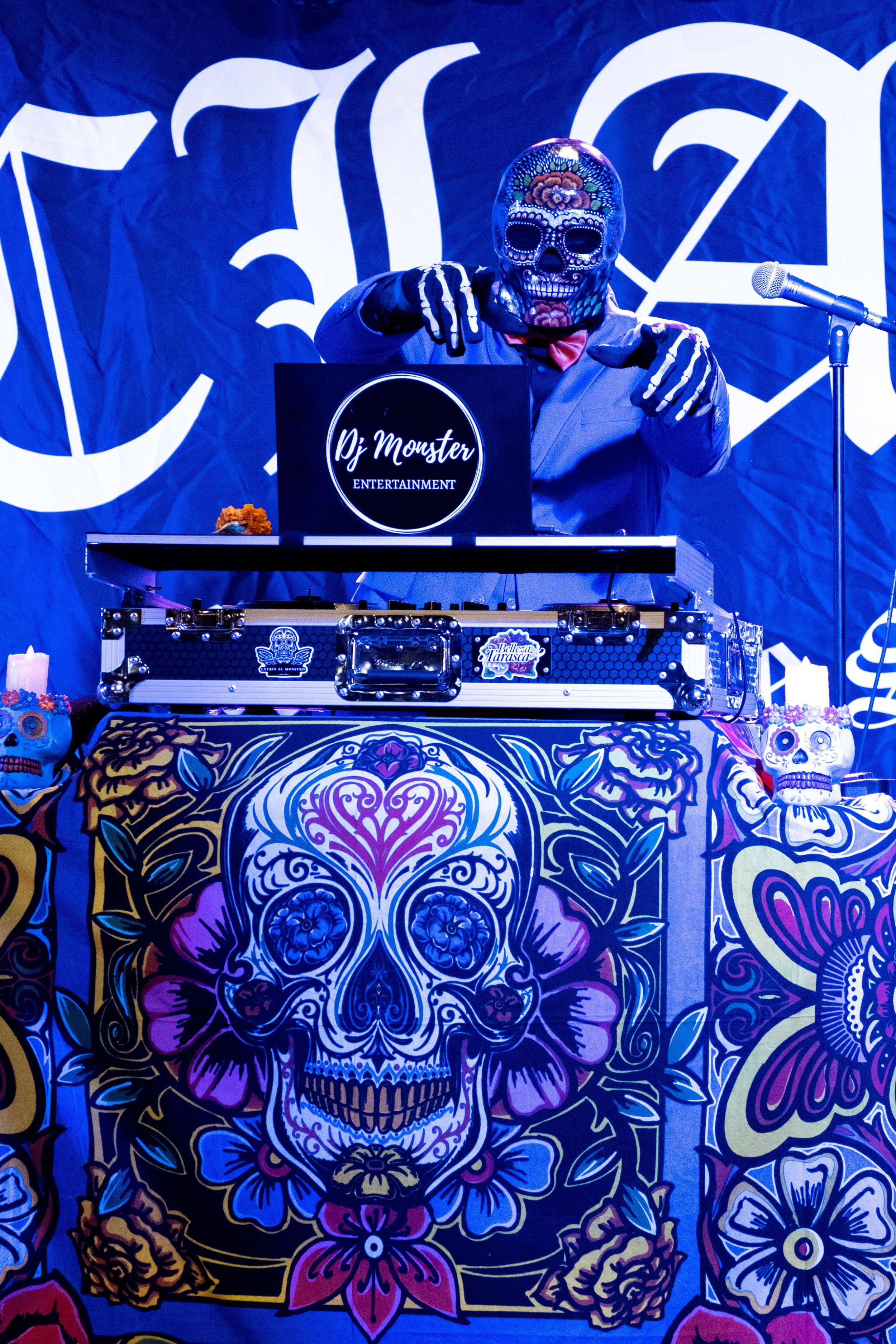

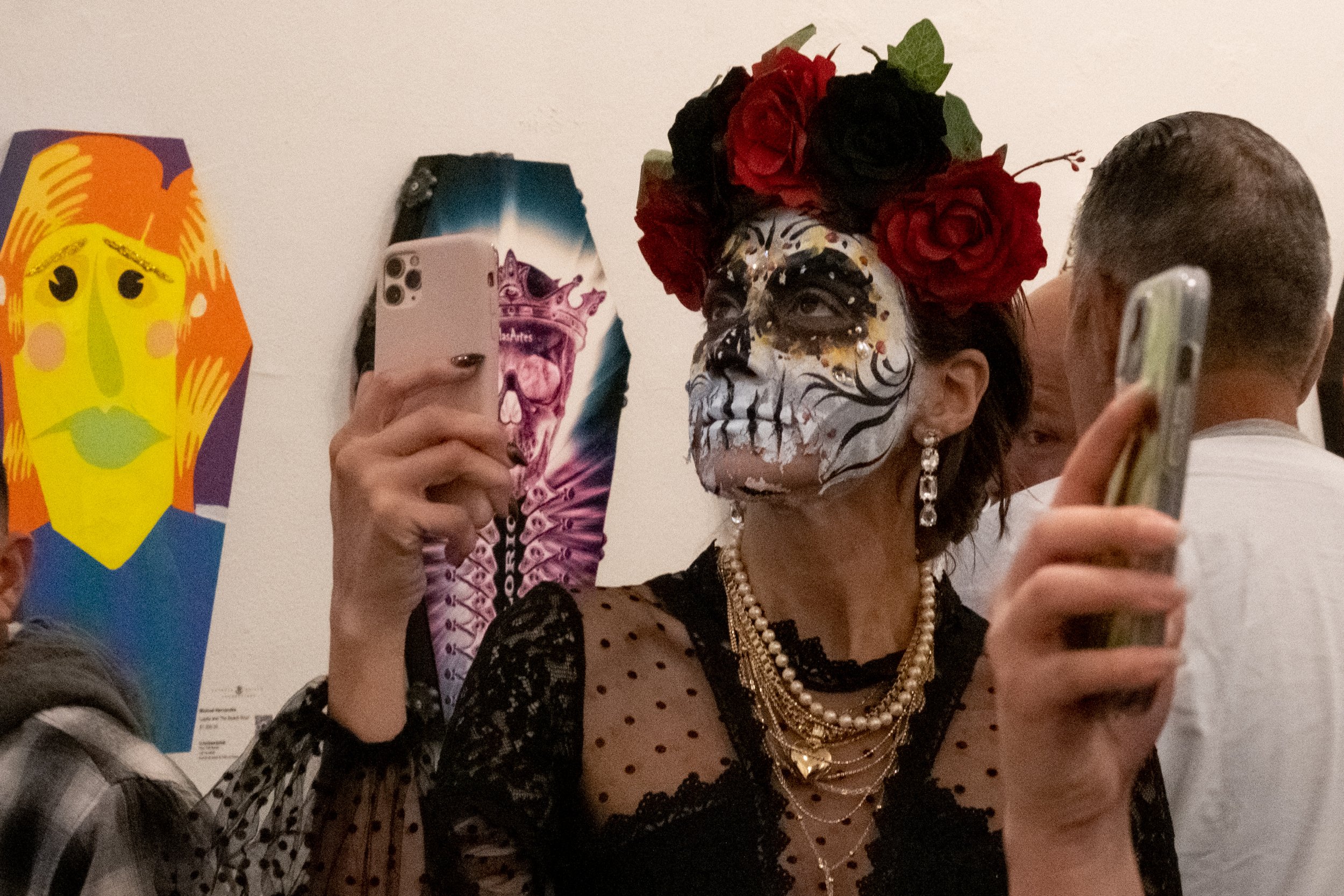
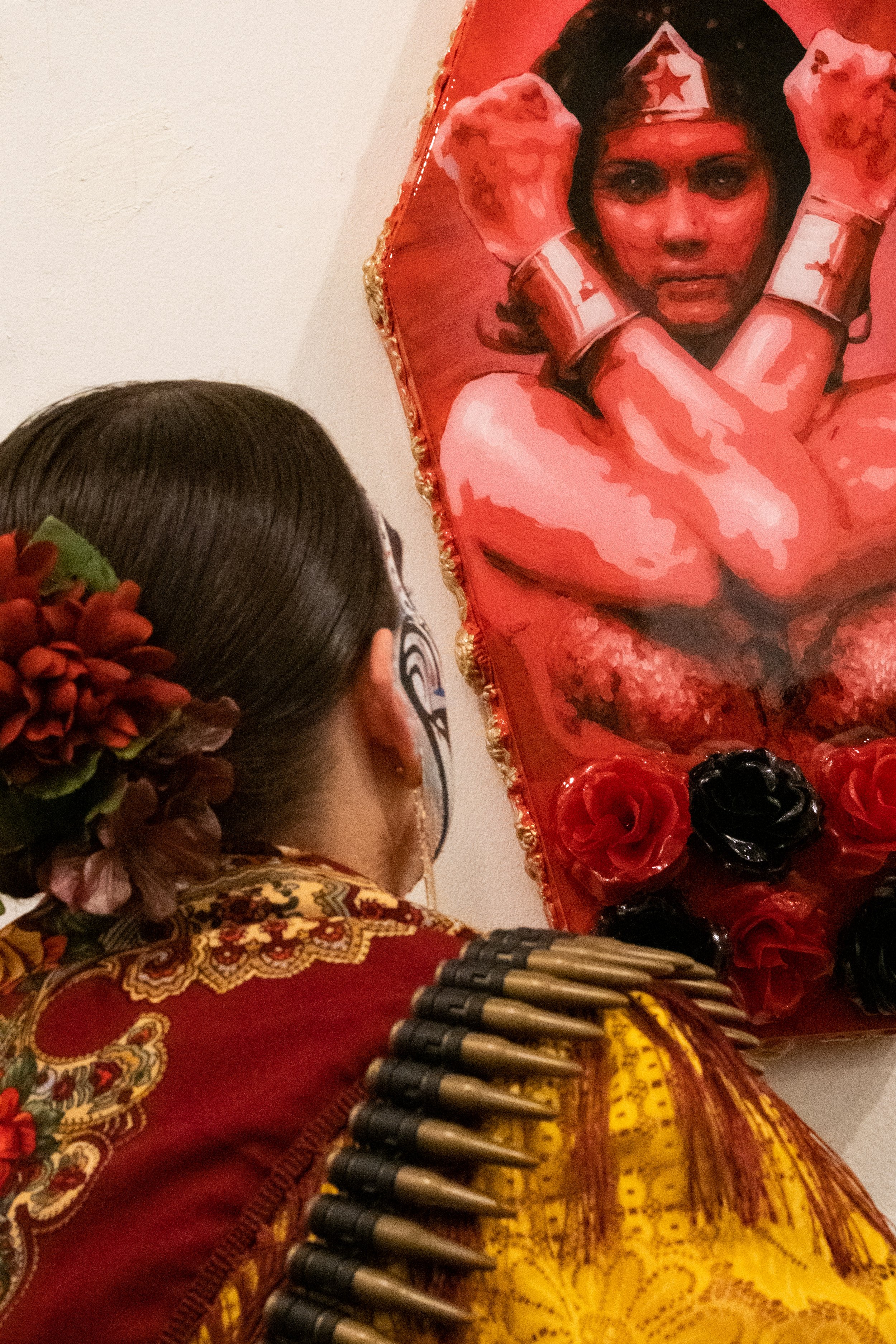
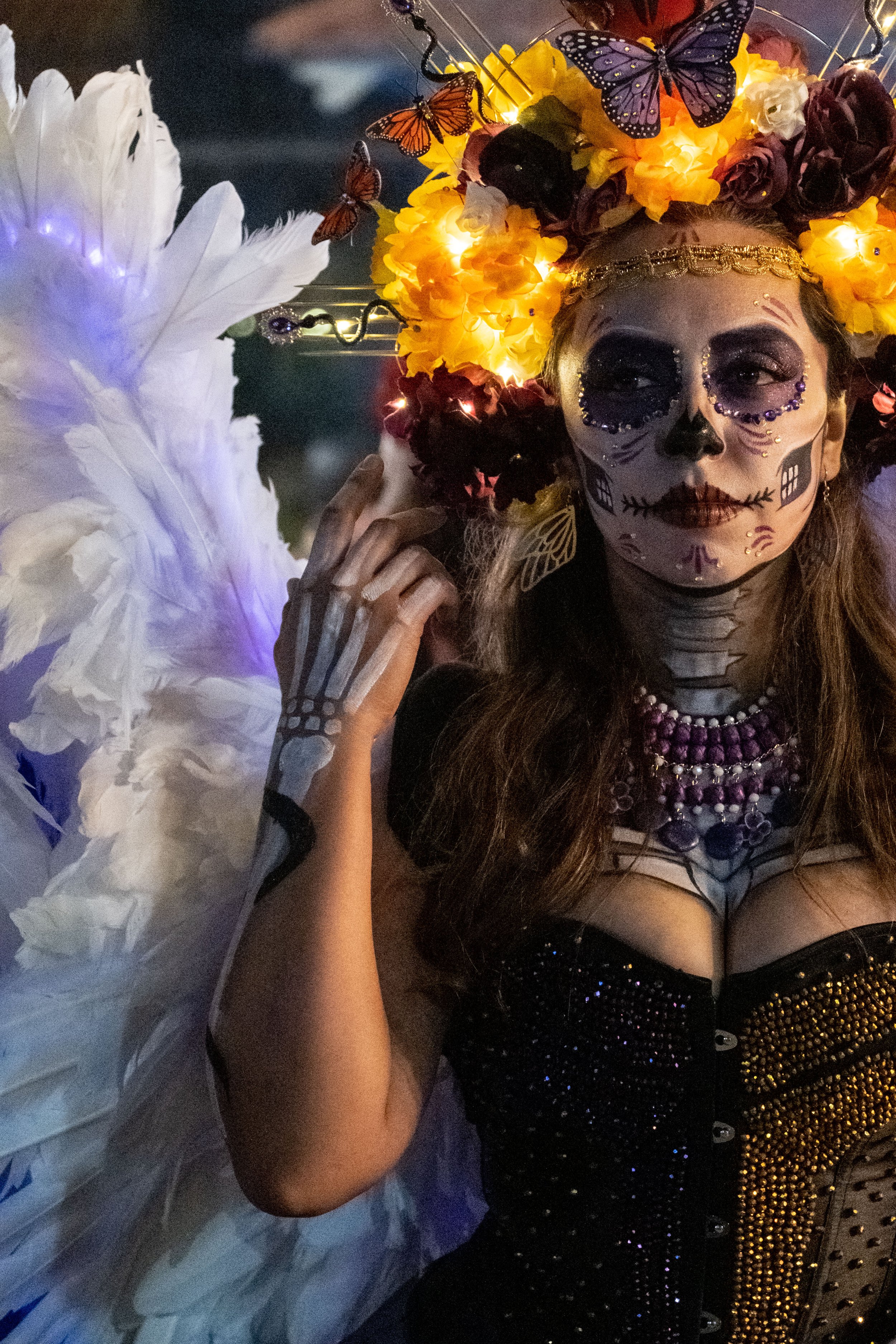
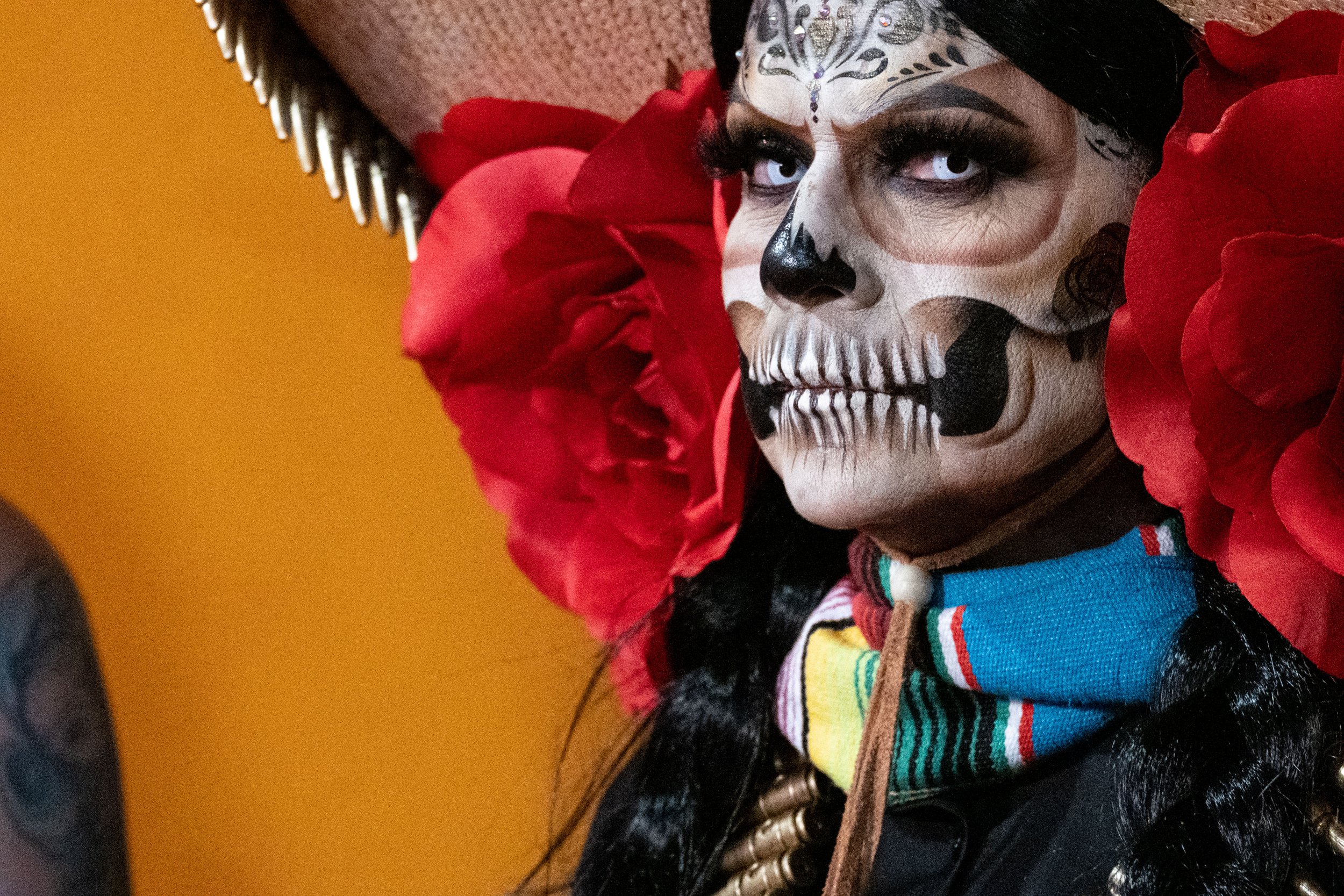
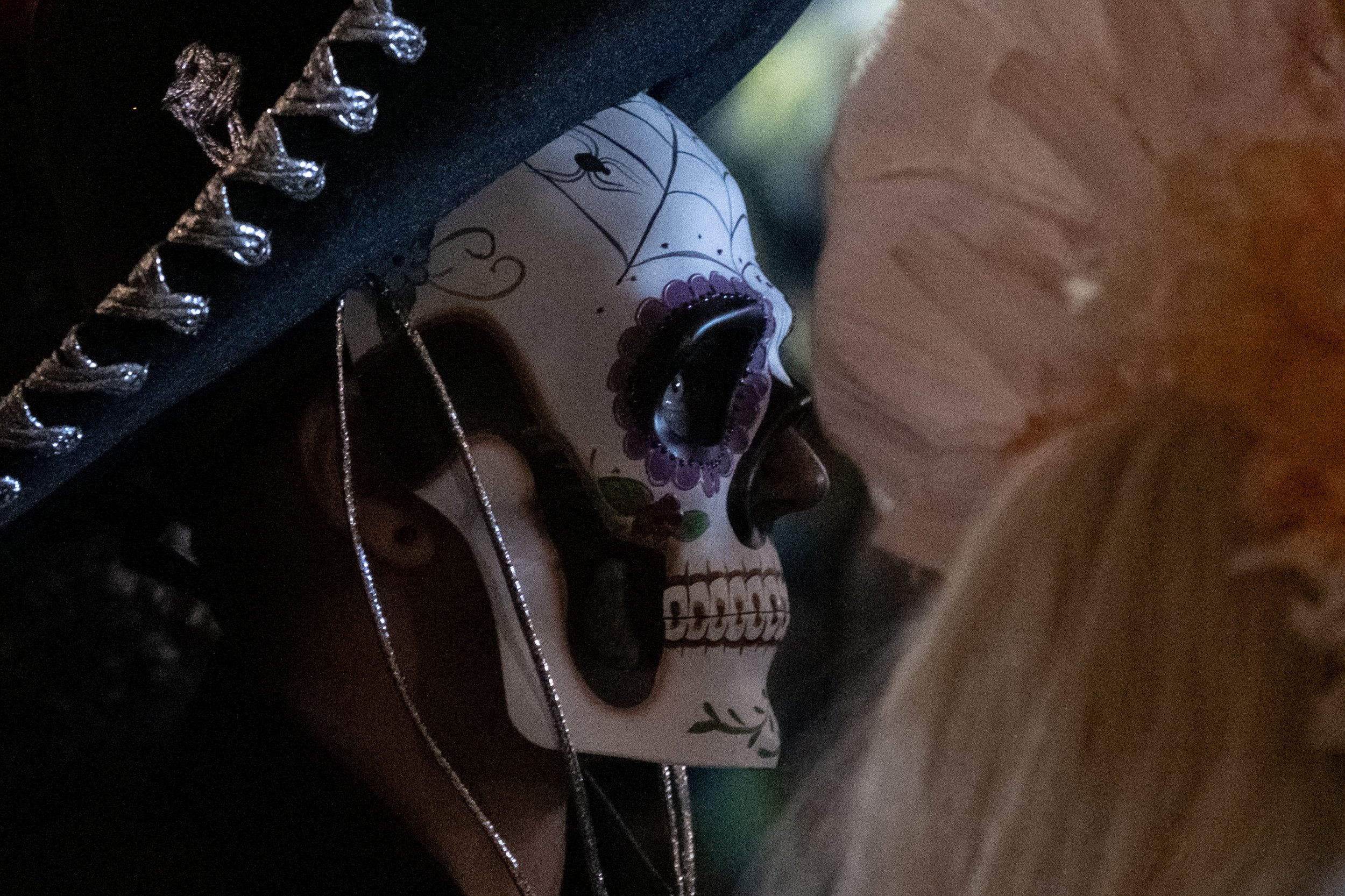
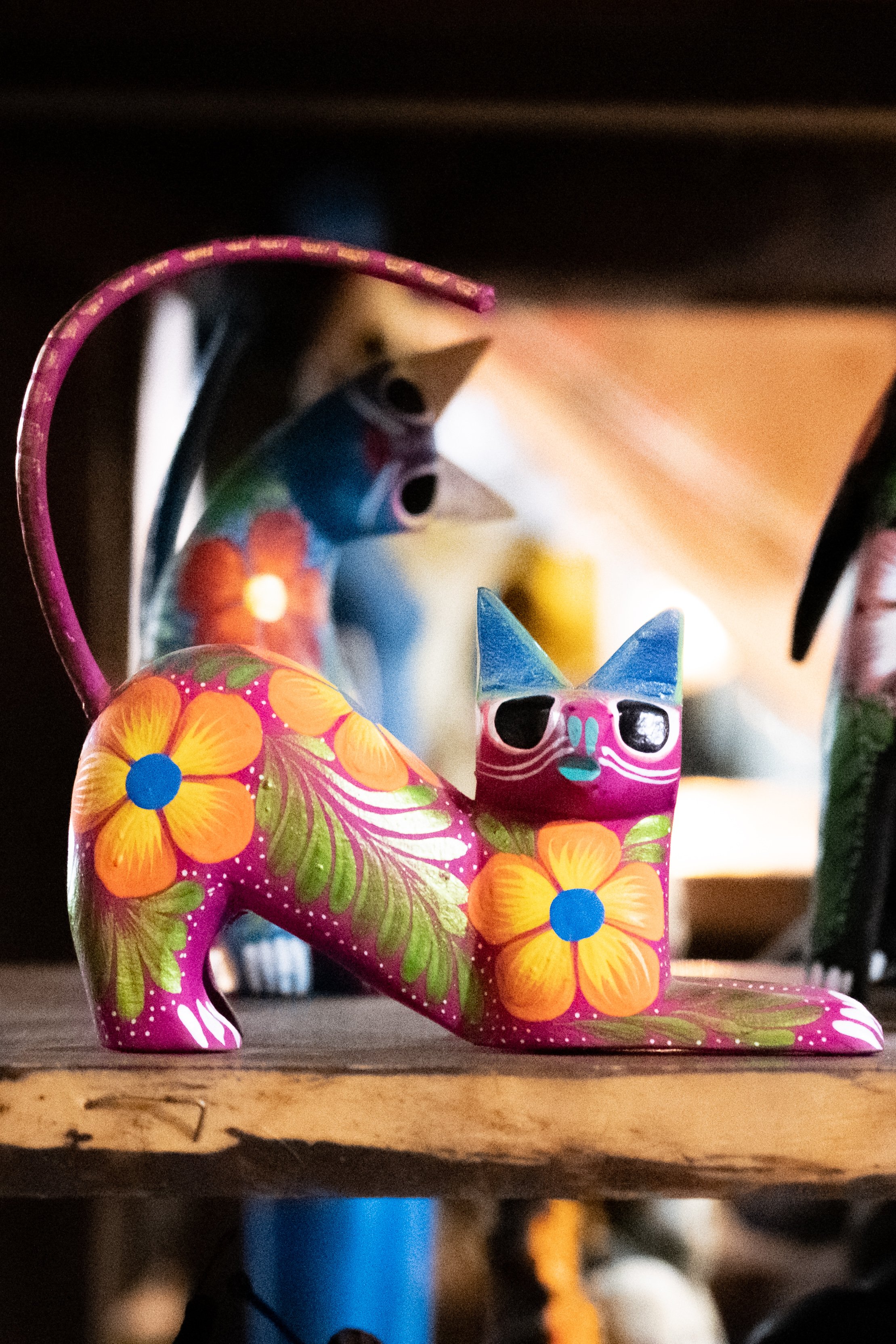
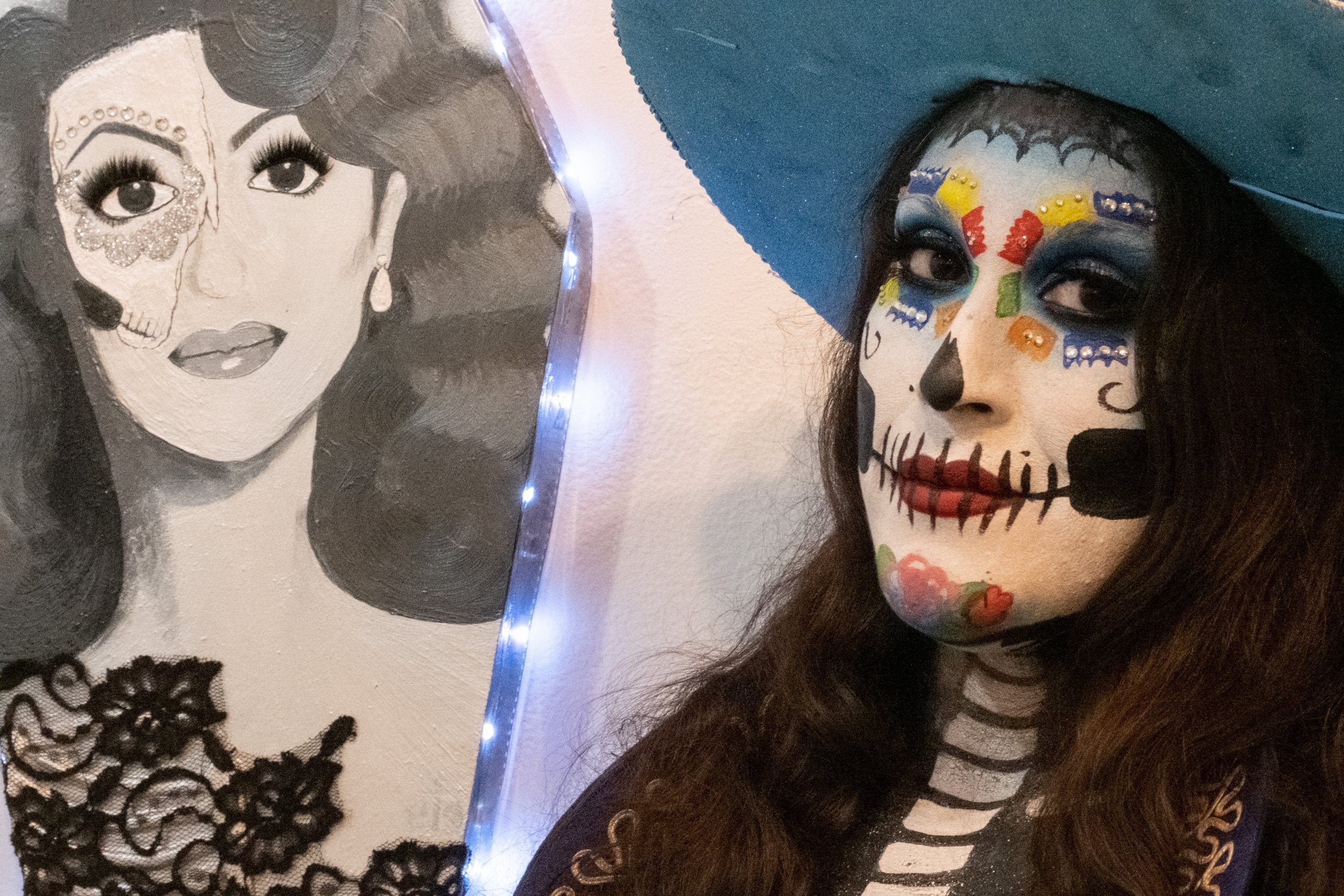
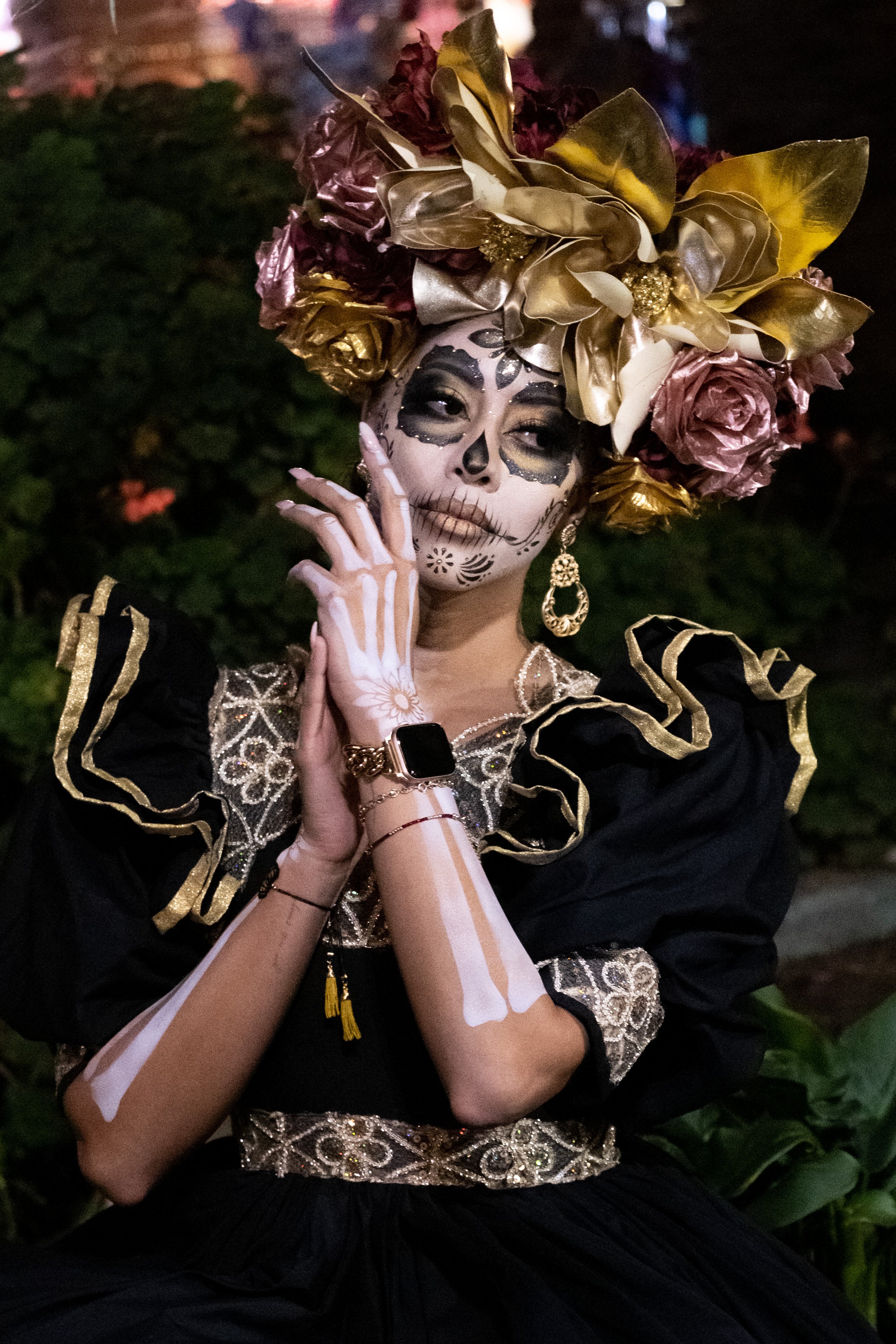
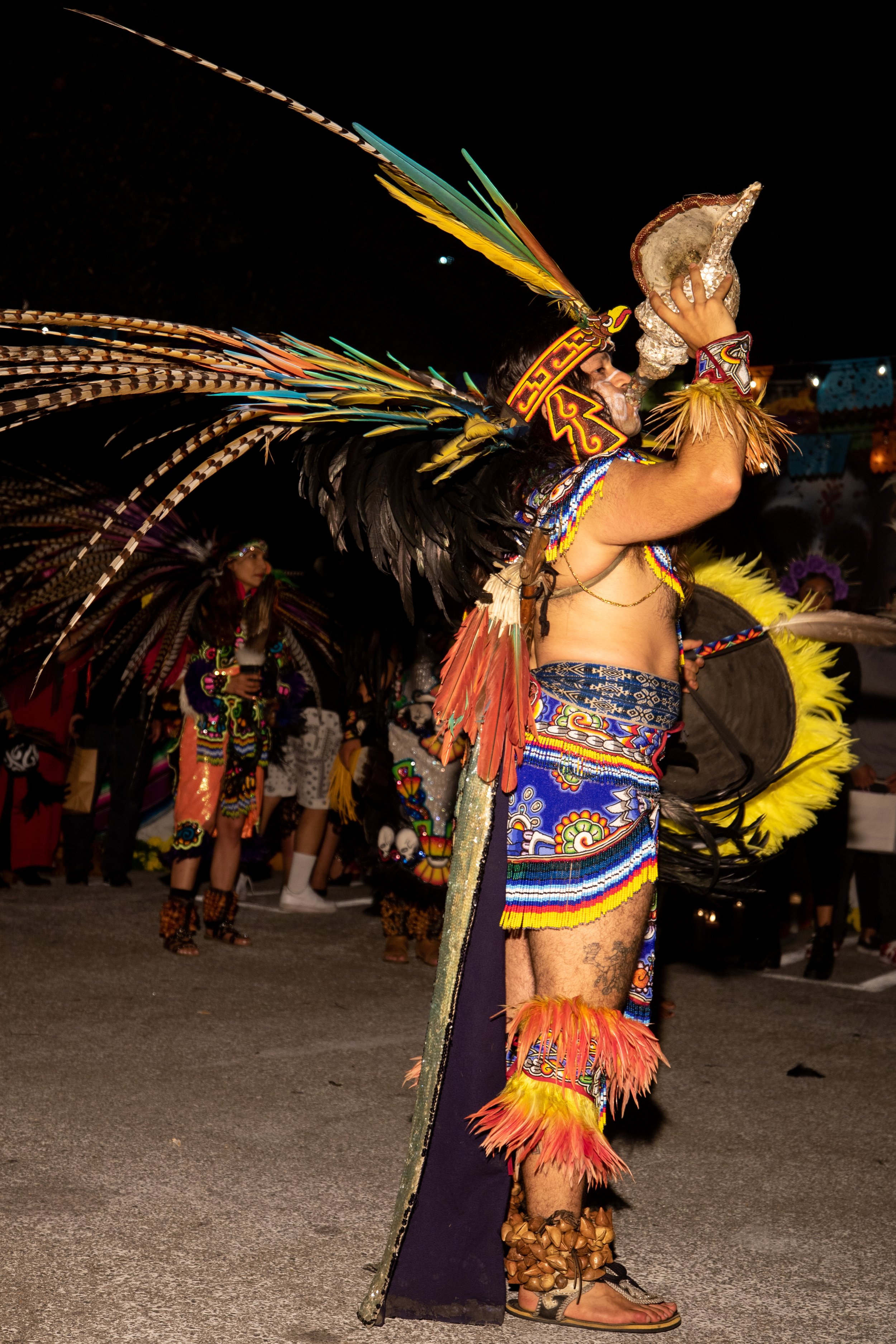
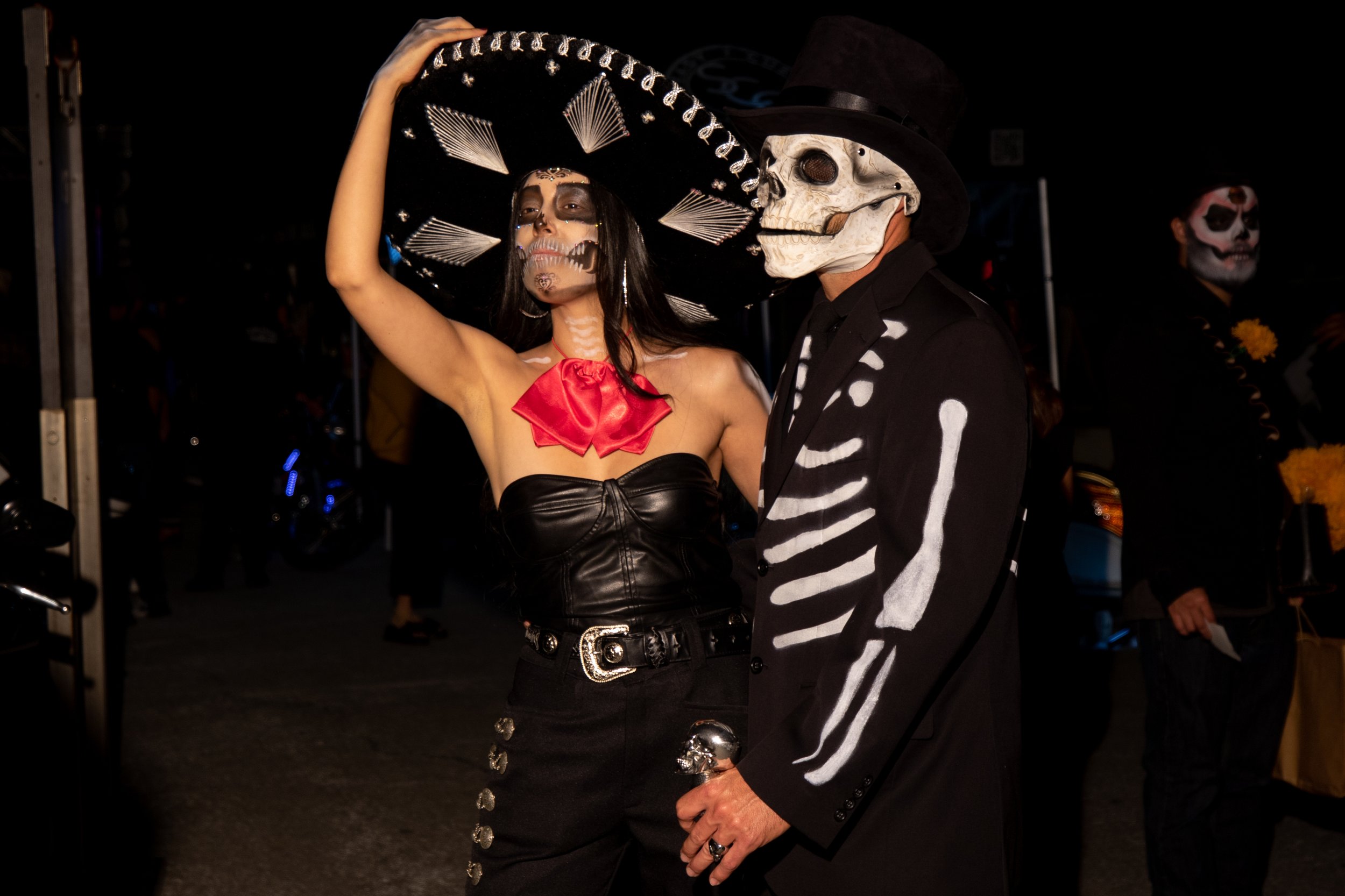
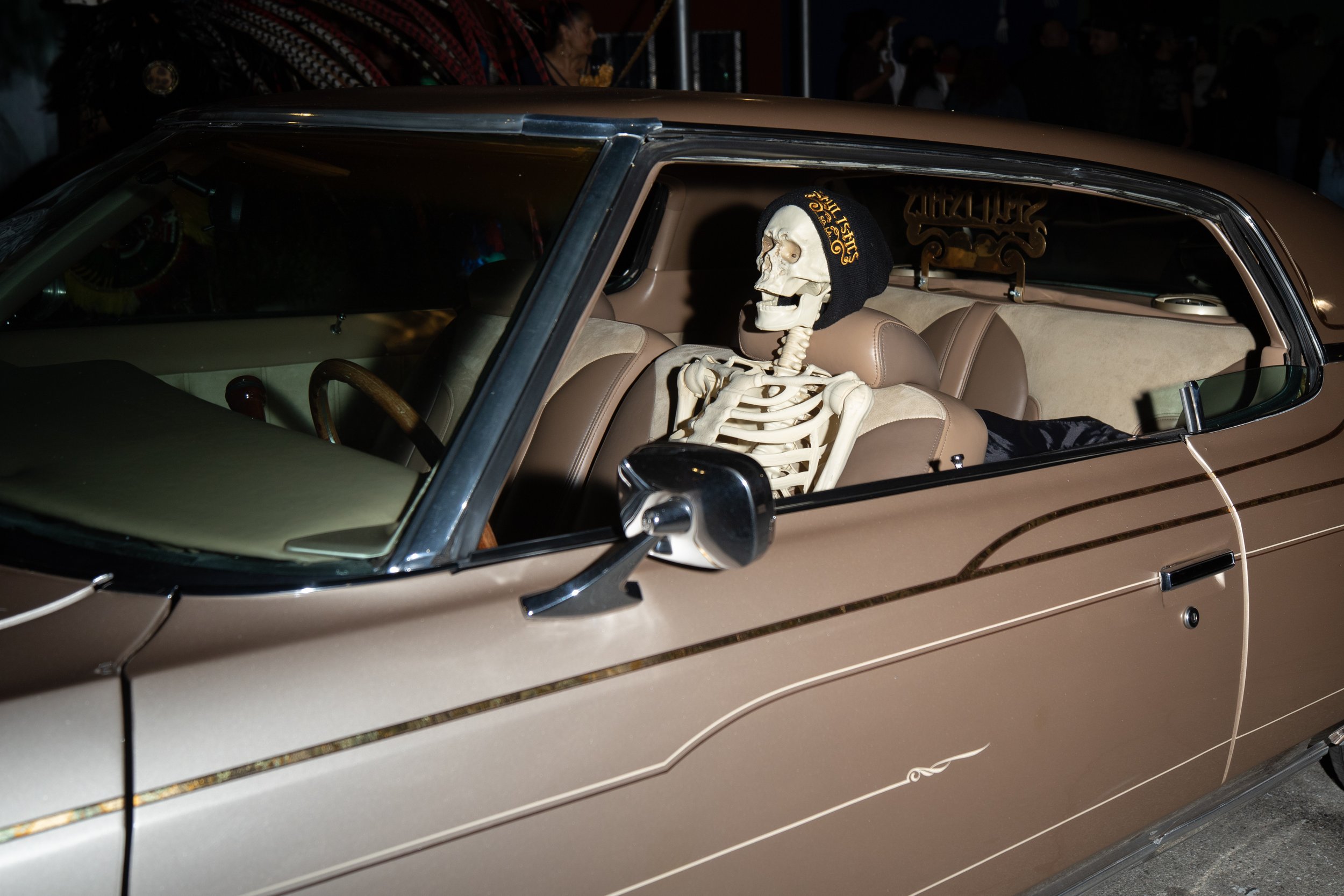

El Velorio’s 13th Annual Day of the Dead Celebration brings out the best of Los Angeles Chicano culture
It’s the end of October in Los Angeles, bringing fall weather and celebrations of Dia de los Muertos, an event unique to Mexican and Aztec heritage. The crowd at the 13th annual El Velorio event was festive and boisterous, bouncing with energy from live music and DJs from three different stages.
A woman who goes by the name Claws passes out goodie bags filled with bundles of sage, a stick of palo santo, a small atomizer filled with Agua de Florida and a business card. Claws works with one of the sponsors, Black Widow Investigations, a law firm specializing in accidents. “We embrace the culture,” she said. “In Hispanic culture they make an altar to honor their ancestors and loved ones who have passed away.” The altar she speaks of is decorated with bright orange marigold flowers, candles, photos and sweets. “We wanted to make a community altar,” she said, “so you can light a candle and place it here on the altar to honor your loved ones.”
Claws is wearing a “Catrina” outfit, characterized by full skirts, dramatic headdresses, low bustlines, skulls, roses, flowers and dramatic accents. Every outfit is unique, and is not complete without the characteristic face paint depicting a skull, or “calavera.”
A Catrina known as “La Catrina Chicana” wears a dress she designed in 2020. The bodice is black with gold sparkles, and her headdress is lit with fairy lights adorning the yellow and purple flowers around her face. The full skirt depicts a mural of Kobe and Gigi Bryant painted over a silhouette of the Los Angeles skyline.
She wears angel wings tipped with purple and gold feathers that open and close to a wingspan about twice as wide as she is tall. She says she designs a different dress every year, each one better than the last. When asked about next year, she said, “I don’t know how I’m going to top Kobe.”
In tribute to fallen female icons, there is an exhibit hall filled with various artists' interpretations of this theme. Ruby Woo is a multimedia artist and a female icon in her own right, showing her work depicting Maria Felix, aka “La Dona”, a 1940’s film star. Woo shares how impacted she has been by this community. “I used to model in the El Velorio fashion shows, so I’m really grateful to have been introduced to the space, to have met so many different people, and now be brave enough to feature a piece and showcase my work.”
Another iconic aspect of the event is the Viclasos Bike Show, which is run by Malo, an artist and motorcycle shop owner. He shares that this event has brought people together. “I got people that are from Texas, Arizona, Colorado and Nevada here. [These are] people that at one point or another didn’t get along. Whether it's the gang life or what-not, that’s the way we were raised back then. And now we can all just come together as a people and celebrate this culture.”
Many people, both men and women, had their faces painted, and there are many creative Dia de los Muertos-themed costumes. There is a lot of pride in the culture that can be seen here. “This is why we come to El Velorio, it’s where La Raza shows up,” said Momo Rodriguez, an actor and podcaster, as he was on stage introducing the bands. La Raza is a Spanish term meaning “the people,” or “the community.” On this day, in a celebration of death, it is beautiful to see how full of life this community truly is.



